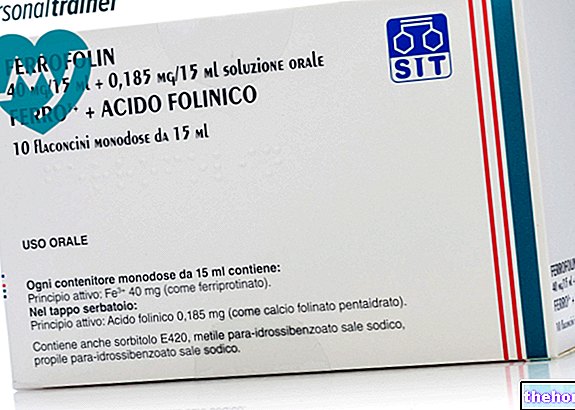Active ingredients: Macrogol
Paxabel 10g sachets of Macrogol 4000
Paxabel package inserts are available for pack sizes:- Paxabel 10g sachets of Macrogol 4000
- Paxabel 4 g, powder for oral suspension
Why is Paxabel used? What is it for?
Paxabel contains the active substance Macrogol 4000 which belongs to a class of medicines called osmotic laxatives. It works by adding water to the stool, which helps overcome problems caused by very slow bowel movements. Paxabel is not absorbed into the circulatory system or metabolized in the body.
Paxabel is used for the symptomatic treatment of constipation in adults and children over 8 years of age. This medicine consists of a powder to be dissolved in a glass of water (at least 50 ml) and to be drunk. It usually acts in the 24-48 hours following its administration.
The treatment of constipation with any medicinal product should be considered an adjuvant to an appropriate lifestyle and a healthy diet.
Contraindications When Paxabel should not be used
Do not use Paxabel:
- if you are allergic (hypersensitive) to macrogol (polyethylene glycol) or any of the other ingredients of this medicine (listed in section 6)
- if you have an existing disease, such as severe bowel disease:
- inflammatory bowel disease (such as ulcerative colitis, Crohn's disease, abnormal dilation of the intestine)
- perforation or risk of intestinal perforation
- ileus or suspected intestinal obstruction
- abdominal pain of undetermined causes
Do not use this medicine if you have any of the conditions listed above. If you are unsure, ask your pharmacist or doctor before taking this medicine.
Precautions for use What you need to know before taking Paxabel
There have been reports of allergic reactions such as skin rash and swelling of the face or throat (angioedema) in adults after taking products containing macrogol (polyethylene glycol). Isolated cases of severe allergic reactions characterized by weakness, collapse or breathing difficulties and general malaise.
If you experience any of these symptoms stop taking Paxabel and contact your doctor immediately.
This medicine can sometimes cause diarrhea, check with your doctor or pharmacist before taking this medicine if:
- suffer from impaired liver or kidney function
- you are taking diuretics (urinating tablets) or are elderly because there is a risk of a decrease in sodium (salt) or potassium in the blood.
Interactions Which drugs or foods may change the effect of Paxabel
Tell your doctor or pharmacist if you are taking, have recently taken any other medicines, including medicines obtained without a prescription.
Warnings It is important to know that:
Pregnancy and breastfeeding
Paxabel can be used during pregnancy and breastfeeding. If you are pregnant or breastfeeding, think you may be pregnant or are planning to become pregnant, or if you are breast-feeding ask your doctor or pharmacist for advice before taking this medicine.
Driving and using machines
Not relevant.
Important information regarding some of the components of Paxabel
If your doctor has told you that you have an "intolerance to some sugars (sorbitol), contact him before taking this medicine. This drug contains a small amount of a sugar called sorbitol, which is converted into fructose.
The presence of sulfur dioxide can rarely cause severe hypersensitivity reactions and difficulty in breathing.
However, Paxabel can be used if you are diabetic or on a galactose-free diet.
Dosage and method of use How to use Paxabel: Dosage
Always use this medicine exactly as described in this leaflet or as directed by your doctor or pharmacist. If in doubt, consult your doctor or pharmacist.
Use in adults and children over 8 years of age
The recommended dose is 1 or 2 sachets per day, preferably taken as a single administration in the morning.
The daily dose must be adjusted according to the clinical effect obtained and can vary from 1 sachet to alternate days (especially in children) up to a maximum of 2 sachets per day.
Dissolve the contents of the sachet in a glass of water (at least 50ml) immediately before use and drink the liquid.
It `s important to note that:
- Paxabel takes 24 to 48 hours to act
- In children, the duration of treatment with Paxabel should not exceed 3 months.
- The improvement in the frequency of your bowel movements obtained with the use of Paxabel can be maintained through a healthy lifestyle and proper nutrition.
- Talk to your doctor or pharmacist if your symptoms worsen or do not improve.
If you forget to take Paxabel
Take the next dose as soon as you notice it. Do not take a double dose to make up for a forgotten dose.
Overdose What to do if you have taken too much Paxabel
Taking too much Paxabel can cause diarrhea, stomach pain and vomiting. Diarrhea generally disappears when treatment is stopped or the dose is reduced.
If you experience severe diarrhea or vomiting contact your doctor as soon as possible as treatment may be needed to prevent the loss of salts (electrolytes) with the lost fluids.
Side Effects What are the side effects of Paxabel
Like all medicines, this medicine can cause side effects, although not everybody gets them.
Side effects are usually mild and temporary and include:
In children:
Common (may affect up to 1 in 10 people)
- Abdominal pain (stomach ache)
- Diarrhea which can cause cramps in the rectum (anus)
Uncommon (may affect up to 1 in 100 people)
- Nausea (feeling sick) or vomiting
- Bloating (abdominal) Not known (frequency cannot be estimated from the available data available data)
- Allergic (hypersensitivity) reactions (rash, hives, swelling of the face and throat, difficulty in breathing, weakness or collapse)
In adults:
Common (may affect up to 1 in 10 people)
- Abdominal pain (stomach pain)
- Abdominal (belly) swelling
- Nausea (feeling sick) or vomiting
- Diarrhea
Uncommon (may affect up to 1 in 100 people)
- He retched
- Urgency to go to the bathroom
- Faecal incontinence
Not known (frequency cannot be estimated from the available data)
- Low levels of potassium in the blood which can cause weakness, tremors and an altered heart rhythm
- Low sodium levels which can lead to tiredness and confusion, muscle spasms, convulsions and coma
- Dehydration caused by severe diarrhea especially in the elderly
- Symptoms of an allergic reaction, such as redness of the skin, rash, hives, swelling of the face and throat, difficulty in breathing, weakness and collapse.
Reporting of side effects
If you get any side effects, talk to your doctor or pharmacist. This includes any possible side effects not listed in this leaflet. You can also report side effects directly via the national reporting system at www.agenziafarmaco.it/it/responsabili. By reporting side effects you can help provide more information on the safety of this medicine.
Expiry and Retention
Keep this medicine out of the sight and reach of children.
Do not use this medicine after the expiry date which is stated on the carton. The expiry date refers to the last day of that month.
Paxabel does not require any special storage conditions.
Do not throw any medicines via wastewater or household waste. Ask your pharmacist how to throw away medicines you no longer use. This will help protect the environment.
Other information
What Paxabel contains
- The active ingredient is 10 g of macrogol 4000 for each sachet
- The other ingredients are: Saccharin sodium (E954), orange-grapefruit flavoring containing orange and grapefruit oils, concentrated orange juice, citral, acetaldehyde, linalool, ethylbutyrate, alfaterpineol, octanal, beta and gamma hexenol, maltodextrin, gum arabica, sorbitol (E420), BHA (E320) and sulfur dioxide (E220)
What Paxabel looks like and contents of the pack
Paxabel is a whitish powder with an orange-grapefruit odor and taste, to be mixed into a liquid.
Paxabel is available in single-dose sachets contained in packs of 10, 20 and 50 and 100 sachets.
Not all pack sizes may be marketed.
Source Package Leaflet: AIFA (Italian Medicines Agency). Content published in January 2016. The information present may not be up-to-date.
To have access to the most up-to-date version, it is advisable to access the AIFA (Italian Medicines Agency) website. Disclaimer and useful information.
01.0 NAME OF THE MEDICINAL PRODUCT
PAXABEL 10 G
02.0 QUALITATIVE AND QUANTITATIVE COMPOSITION
Active principle:
Each sachet contains 10 g of macrogol 4000.
For the full list of excipients, see section 6.1.
03.0 PHARMACEUTICAL FORM
Powder for oral solution in sachets.
Whitish powder with orange-grapefruit smell and taste.
04.0 CLINICAL INFORMATION
04.1 Therapeutic indications
Symptomatic treatment of constipation in adults and children over 8 years of age.
An organic disorder must be ruled out by the doctor before starting treatment.
PAXABEL 10 g should be considered a temporary adjuvant treatment to be associated with a lifestyle and dietary regimen appropriate for constipation, with a maximum therapy course of 3 months in children. If symptoms persist despite associated dietary measures, pre-existing disease should be suspected and treated.
04.2 Posology and method of administration
For oral use.
1-2 sachets per day, preferably taken as a single administration in the morning. Each sachet must be dissolved in a glass of water just before use.
The effect of PAXABEL manifests itself in the 24-48 hours following its administration.
In children, treatment should not exceed 3 months, in the absence of clinical data on the use of the product for periods longer than 3 months. The regularization of intestinal motility induced by the treatment must be maintained with lifestyle and dietary measures.
The daily dose should be adjusted according to the clinical effect obtained and can vary from 1 sachet every other day (especially in children) up to 2 sachets per day.
04.3 Contraindications
Serious organic inflammatory diseases of the colon (such as ulcerative colitis, Crohn's disease), toxic megacolon associated with symptomatic stenosis.
Gastrointestinal perforation or risk of gastrointestinal perforation.
Ileus or suspicion of intestinal obstruction.
Abdominal pain of undetermined causes.
Known individual hypersensitivity to macrogol (polyethylene glycol) or any of the excipients of the product.
04.4 Special warnings and appropriate precautions for use
Warnings
The treatment of constipation with any medicinal product should be considered an adjuvant to an appropriate lifestyle and a healthy diet, for example:
increase of vegetable fibers and liquids in the diet,
appropriate physical activity and re-education of intestinal motility.
Patients with hereditary problems of fructose intolerance should not take Paxabel.
In case of diarrhea, special precautions should be taken in patients predisposed to disturbances in the water and electrolyte balance (i.e. patients with impaired hepatic and renal function or patients on treatment with diuretics) and checks of the patient's electrolyte picture should be implemented.
Precautions for use
Very rare cases of hypersensitivity reactions (rash, urticaria, edema) have been reported with drugs containing polyethylene glycol. Exceptional cases of anaphylactic shock have been reported.
PAXABEL, as it does not contain significant quantities of sugars or polyols, can also be prescribed to diabetic patients or to subjects with a galactose-free diet.
04.5 Interactions with other medicinal products and other forms of interaction
Not relevant.
04.6 Pregnancy and breastfeeding
Pregnancy
Macrogol 4000 was not teratogenic in rats or rabbits.
There are insufficient data on the use of PAXABEL in pregnant women, therefore administration of PAXABEL in such circumstances should be practiced with caution.
Feeding time
There are no data on the excretion of macrogol 4000 in breast milk, but since macrogol 4000 is not significantly absorbed, PAXABEL can be administered during lactation.
04.7 Effects on ability to drive and use machines
Not relevant.
04.8 Undesirable effects
Adults
During clinical trials, in which nearly 600 patients were included, undesirable effects were reported at the frequency indicated below. These effects were always minor and transient effects and were found in the gastrointestinal system.
Common (≥1 / 100, abdominal distension and / or abdominal pain, nausea, diarrhea
Uncommon (≥1 / 1000, vomiting is the most common consequence of diarrhea: urgency to defecate and fecal incontinence.
Additional information from post-marketing surveillance includes very rare cases (pruritus, urticaria, rash, face edema, Quinke's edema and isolated cases of anaphylactic shock.
Excessive doses can cause diarrhea, which generally disappears when the dosage is reduced or treatment is temporarily stopped.
Children
In clinical trials in 147 children aged 6 months to 15 years, undesirable effects were reported with the frequency indicated below. These effects were always minor and transient effects and were found in the gastrointestinal system.
Alterations of the gastrointestinal system:
Common (≥1 / 100,
Uncommon (≥1 / 1000, bloating, vomiting and nausea.
There is no additional information from post-marketing surveillance: hypersensitivity reactions have not yet been reported in the child. However, such reactions can occur, as reported for the adult.
Excessive doses can cause diarrhea, which generally disappears when the dosage is reduced or treatment is temporarily stopped. Diarrhea can cause perianal pain.
04.9 Overdose
Overdose induces diarrhea which disappears upon temporary discontinuation of treatment or dose reduction.
Excessive fluid loss due to diarrhea or vomiting may require corrective measures of electrolyte disorders.
Cases of pulmonary aspiration have been reported in conjunction with nasogastric tube administration of large volumes of polyethylene glycol and electrolytes.
Neurologically impaired children suffering from oromotor dysfunction are particularly at risk of pulmonary aspiration.
05.0 PHARMACOLOGICAL PROPERTIES
05.1 Pharmacodynamic properties
Osmotic laxative
ATC code: A06AD15
Macrogol 4000 with high molecular weight has long linear polymer chains on which water molecules are retained by hydrogen bonds. Administered orally, it causes an increase in the volume of intestinal fluids.
The volume of unabsorbed intestinal fluid is at the origin of the laxative properties of the solution.
05.2 Pharmacokinetic properties
Pharmacokinetic data confirm that macrogol 4000 does not undergo gastrointestinal reabsorption or biotransformation after oral ingestion.
05.3 Preclinical safety data
Toxicology studies with macrogol 4000 in different animal species revealed no signs of systemic or local gastrointestinal toxicity. Macrogol 4000 has no teratogenic, mutagenic or even carcinogenic effects. Drug interaction studies performed in rats with some NSAIDs, anticoagulants, gastric antisecretors or hypoglycemic sulfonamides have shown that PAXABEL does not interfere with the gastrointestinal absorption of these compounds.
06.0 PHARMACEUTICAL INFORMATION
06.1 Excipients
Saccharin sodium (E954), artificial flavor (orange-grapefruit) **.
** Composition of the orange-grapefruit artificial aroma: orange and grapefruit oils, concentrated orange juice, citral, acetaldehyde, linalool, ethylbutyrate, alpha-terpineol, octanal, beta-gammahexenol, maltodextrin, gum arabic, sorbitol.
06.2 Incompatibility
Not relevant.
06.3 Period of validity
3 years
06.4 Special precautions for storage
No special storage precautions.
06.5 Nature of the immediate packaging and contents of the package
Bags (paper / aluminum / PE).
Single-dose sachets contained in packs of 10, 20, 50 sachets.
Not all pack sizes may be marketed.
06.6 Instructions for use and handling
No special instructions.
07.0 MARKETING AUTHORIZATION HOLDER
MarvecsPharma Services S.r.l.
Via Felice Casati, 16
20124 Milan
08.0 MARKETING AUTHORIZATION NUMBER
10 sachets of 10 g AIC n ° 036003010 / M
20 sachets of 10 g AIC n ° 036003022 / M
50 sachets of 10 g AIC n ° 036003034 / M
09.0 DATE OF FIRST AUTHORIZATION OR RENEWAL OF THE AUTHORIZATION
March 2004
10.0 DATE OF REVISION OF THE TEXT
April 2009




























